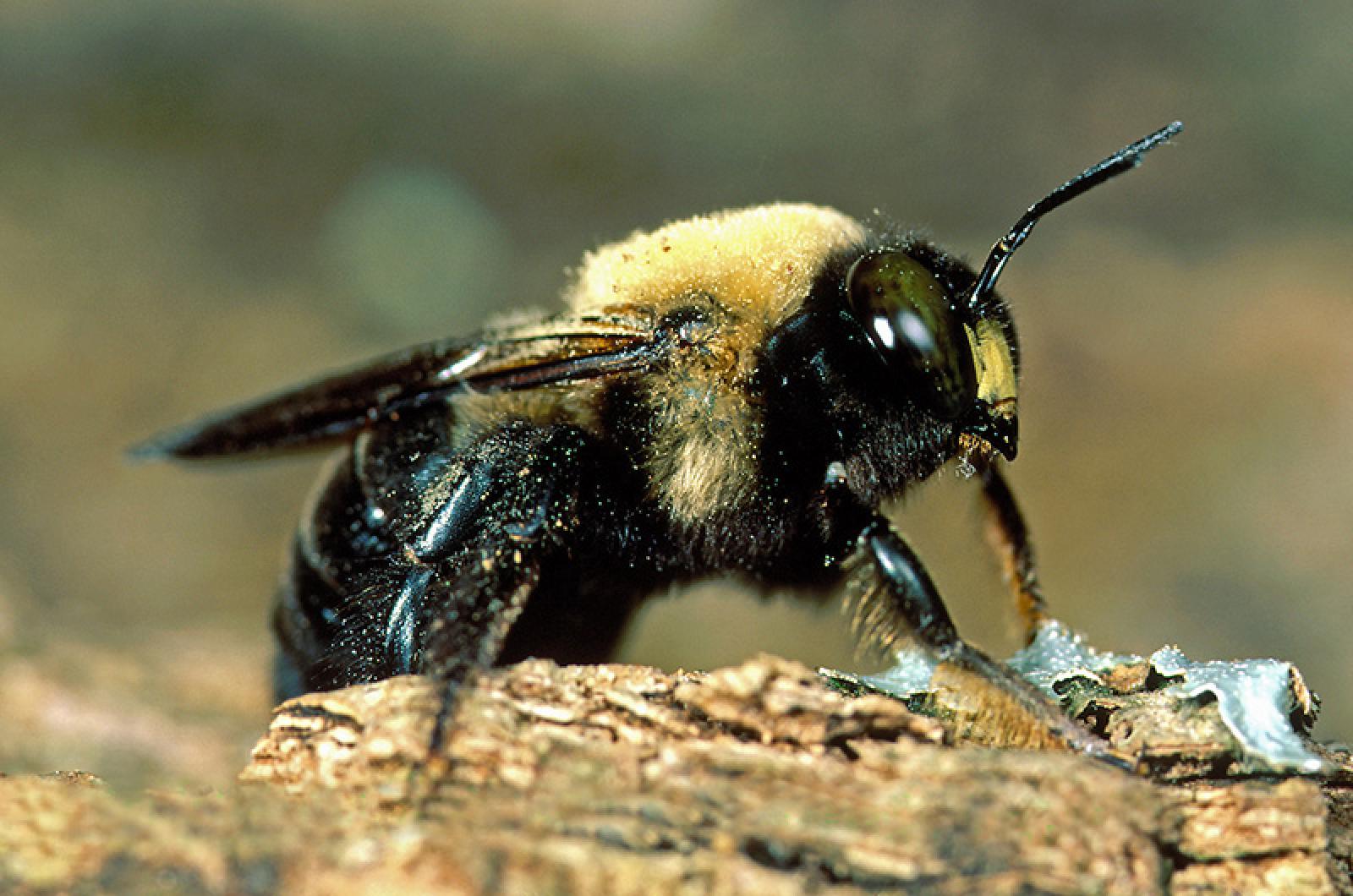Carpenter bees are coming out of the woodwork. Pat Tyra knew that the buzz around her house might be trouble. She suspected that the bees hanging around were not interested in the honey in her cupboard, but were after the fiber in her fascia.
Since her bees were large, Pat suspected that they were either bumblebees or carpenter bees and was concerned about the damage they might do to her home.
First things first — were they carpenter bees or bumblebees? Though both are large, these two species are not difficult to distinguish. Look at the abdomen, which is the last of the three main body parts (the head and thorax are the first two). Bumblebees have hairy abdomens with black and yellow sections, while the abdomens of carpenter bees are smooth, hairless, shiny, and all black.
Additional differences include where and how they live. Bumblebees are social (colonial) insects that nest in the ground, have a single fertile queen and can be slightly larger in size. Carpenter bees nest in wood but don’t eat it, are solitary, and every female is fertile.
Carpenter bees were Pat’s problem and she wanted to know what to do about them, adding that she would prefer a nontoxic option.
But the confirmation of carpenter bees was just the beginning. To take care of them, one must understand their lifestyle since prevention is the key.
Is this a new problem or is there evidence that these bees have been here before? Carpenter bees make a perfect round hole in wood for their entrance, approximately the diameter of your finger (half an inch), and are known to favor woods such as pine, cedar, cypress and redwood.
Once ensconced, carpenter bees excavate tunnels with cells (or galleries) in which they will deposit bee balls or bee bread (pollen plus regurgitated nectar), upon which they will lay a single egg. They then close the cell and continue the process, leaving future progeny to develop. Each cell is sealed and the egg will hatch into a larva and then grow to adulthood without any additional help from its mother. The adult bee will overwinter in its cell and emerge in the spring to start the cycle again.
These bees are more buzz than bite or sting. The male bees lack stingers but act aggressively anyway, often coming in close to your head and face. Females can sting but usually don’t, except in extreme cases.
A suggestion if you have already found the telltale round holes is to plug or seal them up before the bees’ spring breeding season. Also do the same for cracks and crevices that might add appeal to these potential housemates. Other sources relate that prevention is the key. Since carpenter bees prefer bare, unpainted wood, consider painting or staining your exposed wood trim, fascia, rails and other surfaces.
And keep an eye on them to make sure that they don’t return. Carpenter bees can create both aesthetic and, in the worst cases, even structural damage so you don’t want repeated infestations. Best-case scenario is perhaps a new paint job and an insect that will no longer fade into the woodwork.
Suzan Bellincampi is director of the Felix Neck Wildlife Sanctuary in Edgartown, and author of Martha’s Vineyard: A Field Guide to Island Nature.







Comments
Comment policy »